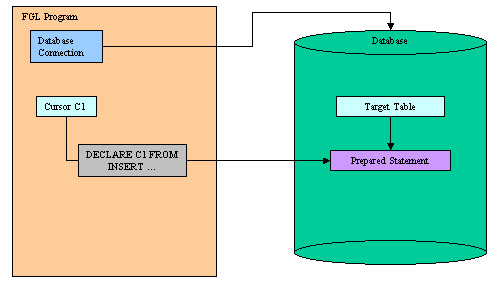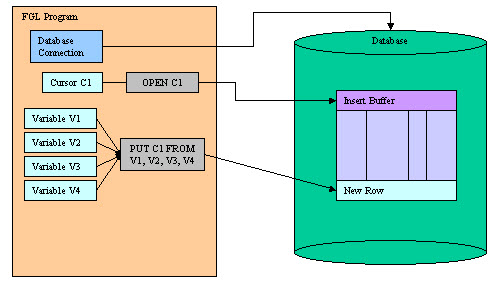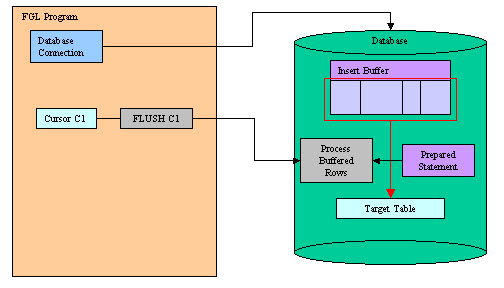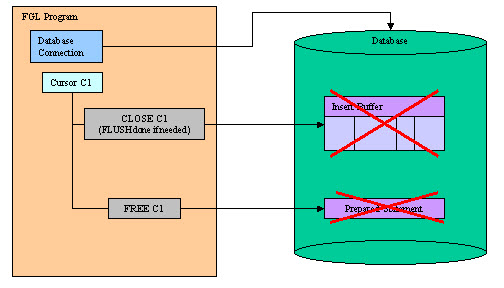An insert cursor is a database cursor declared with a restricted form of the INSERT statement, designed to perform buffered row insertion in database tables.
The insert cursor simply inserts rows of data; it cannot be used to fetch data. When an insert cursor is opened, a buffer is created in memory to hold a block of rows. The buffer receives rows of data as the program executes PUT statements. The rows are written to disk only when the buffer is full. You can use the CLOSE , FLUSH , or COMMIT WORK statement to flush the buffer when it is less than full. You must close an insert cursor to insert any buffered rows into the database before the program ends. You can lose data if you do not close the cursor properly.
When the database server supports buffered inserts, an insert cursor increases processing efficiency (compared with embedding the INSERT statement directly). This process reduces communication between the program and the database server and also increases the speed of the insertions.
Before using the insert cursor, you must declare it with the DECLARE instruction using an INSERT statement.

Figure 1. Declaring a cursor
Once declared, you can open the insert cursor with the OPEN instruction. This instruction prepares the insert buffer. When the insert cursor is opened, you can add rows to the insert buffer with the PUT statement.

Figure 2. OPEN and PUT statements
Rows are automatically added to the database table when the insert buffer is full. To force row insertion in the table, you can use the FLUSH instruction.

Figure 3. FLUSH statement
Finally, when all rows are added, you can CLOSE the cursor and if you no longer need it, you can de-allocate resources with the FREE instruction.

Figure 4. CLOSE and FREE statements
By default, insert cursors must be opened inside a transaction block, with BEGIN WORK and COMMIT WORK, and they are automatically closed at the end of the transaction. If needed, you can declare insert cursors with the WITH HOLD clause, to allow uninterrupted row insertion across multiple transactions.